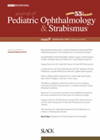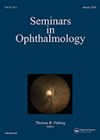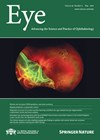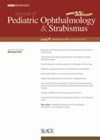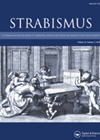
Journal Reviews
Outcomes for strabismus surgery dependent on access to insurance
The primary aim of this study was to compare postoperative outcomes in a larger cohort of paediatric patients having strabismus surgery with at least 11 months follow-up to determine the impact of low socio-economic status (SES) and health disparities and...
Speculum use increases IOP in newborn measurements
The authors aimed to investigate the effect on using an eyelid speculum (Barraquer wire eyelid speculum) on IOP measurement in newborns with a mean age of 37 weeks under topical anesthesia. Mean gestational age at birth and mean post-conceptual age...
Use of botulinum toxin A in the treatment of intermittent exotropia
In this prospective cohort study, the authors aimed to evaluate the efficiency of botulinum toxin A (BTA) injection in the treatment of intermittent exotropia (IXT) and examine factors affecting treatment outcomes. Seventy-four patients diagnosed with any type of IXT were...
Handheld OCT in children with Down’s syndrome
This article investigated the use of handheld optical coherence tomography (OCT) in children with Down’s syndrome. Fourteen children were recruited to the study with a mean age of 6 years and 10 months with 57% male. All patients were dilated....
Bimedial resection surgery dose-response
The purpose of this study was to evaluate the dose-response relationship for primary bilateral medial rectus (MR) resection in 49 children with exotropia. Fifty-seven percent of children were male and mean age at surgery was 6.7 ±5.3 years. Mean preoperative...
Potential mechanism of over / under actions of inferior oblique muscles
In this paper, the authors hypothesise that fusional vergence adaptation, in patients who can fuse in at least some gaze positions, can cause curvature of the non-fixing eye movement paths of patients with apparent overaction or under action of the...
Surgical management options for NLDO
The authors aimed to develop a current collective practice profile for management of nasolacrimal duct obstruction (NLDO). They conducted an online survey of American Association of Pediatric Ophthalmology & Strabismus (AAPOS) members of which 142 completed surveys were collected within...
Effect of one versus 24 hours diagnostic occlusion
The purpose of this study was to compare measurements taken after one and 24 hours of diagnostic occlusion in cases of basic and divergence excess types of intermittent exotropia. This was a prospective study of 43 patients (34 females) with...
Manual versus photo screening comparisons
This study was designed and undertaken to compare the results obtained from the SPOT vision screener and PlusOptix vision screener versus manual screening results in preschool children. Manual screening used LEA symbols and stereo butterfly tests. Over a three-month period,...
Exotropia control score versus angle
The authors aimed to evaluate the relationship between family history and deviation control in intermittent exotropia, and the effects of age, sex, angle and refractive status on deviation control. This was retrospective review of 54 patients aged 7.7 ±4 years...
Association of sleep problems in children with visual impairment
The intention of this study was to investigate sleep problems in children who had a wide range of visual impairments. Recruitment was via an online survey distributed through the National Federation of Blind and National Organisation for Albinism and Hypopigmentation,...
Complications of limbal stay sutures
There is limited literature describing complications at the limbal suture site. The authors describe two cases with postoperative complications due to use of intraoperative limbal stay sutures. Each case had strabismus surgery at other centres but with presentation to the...

